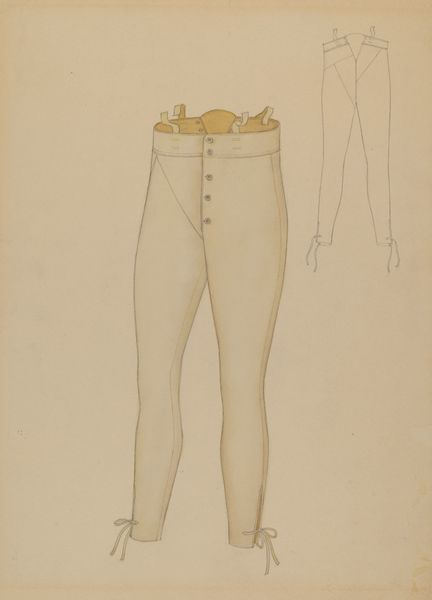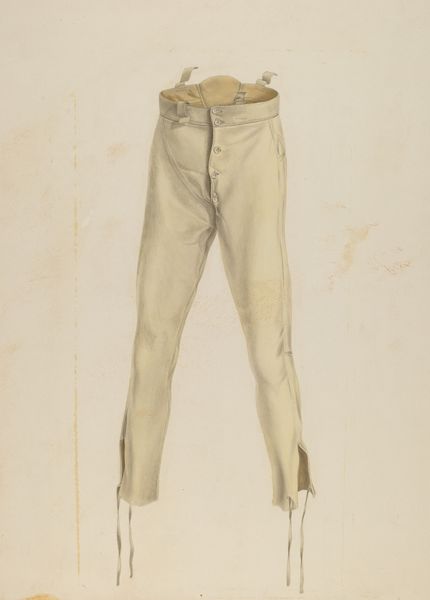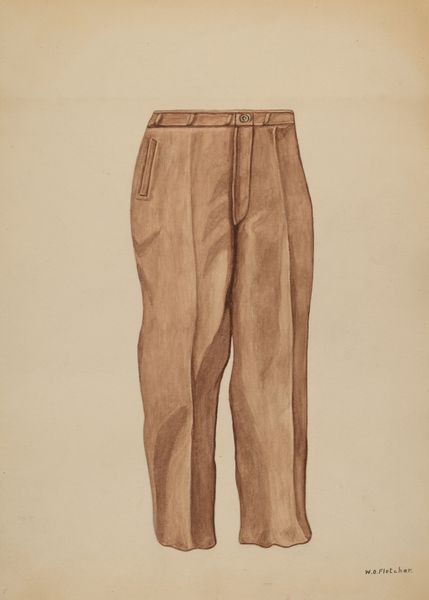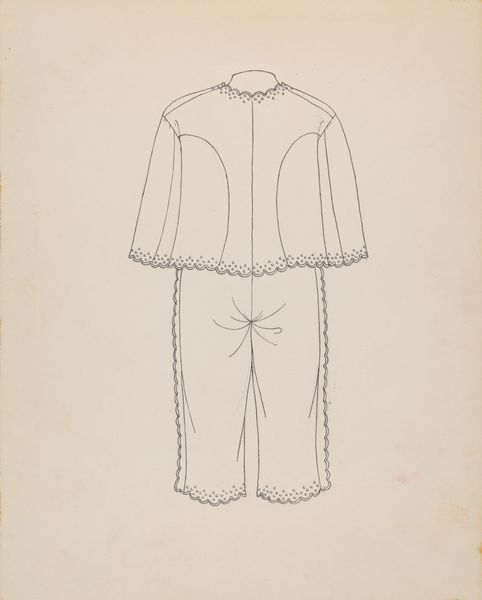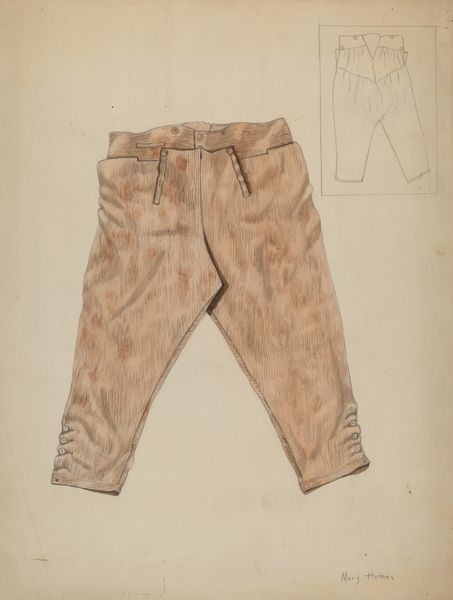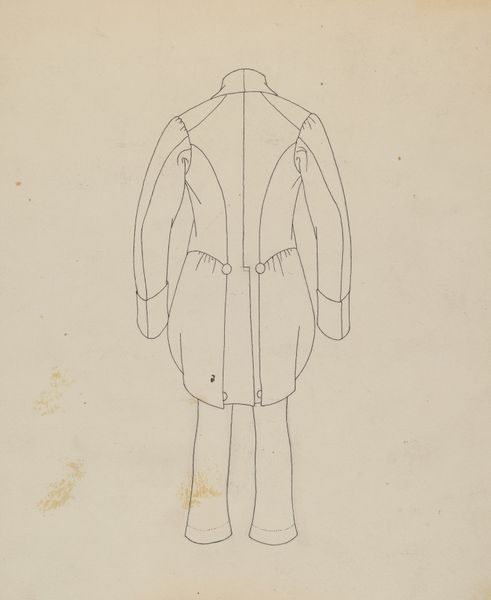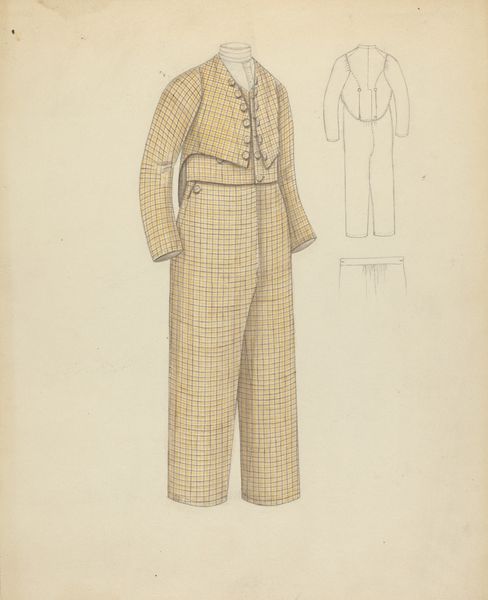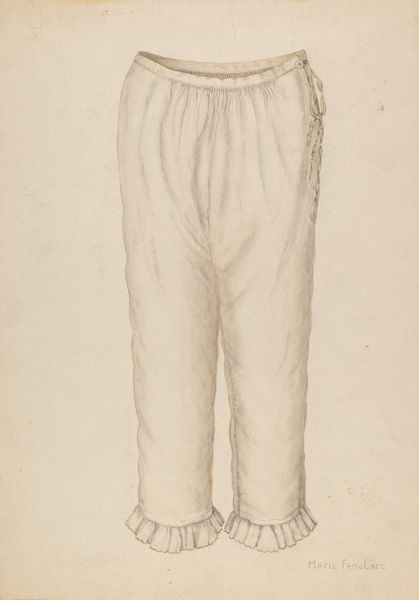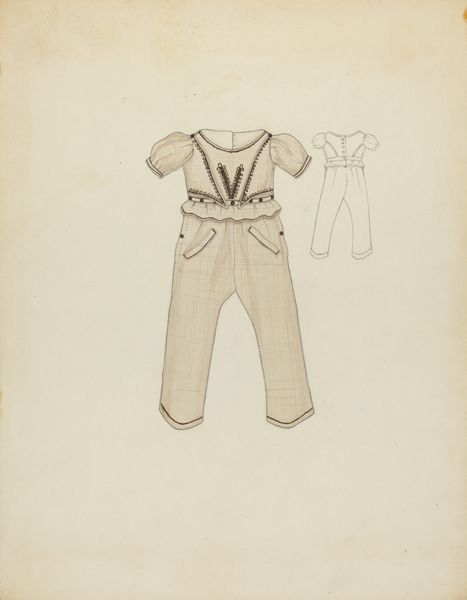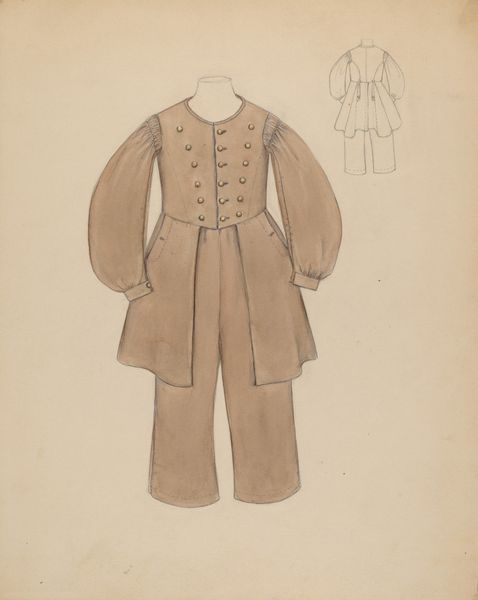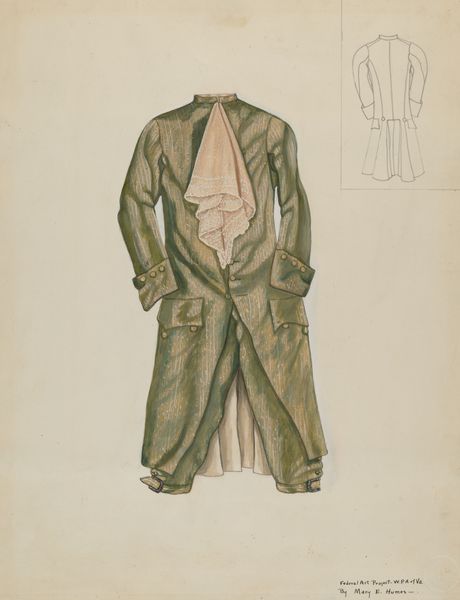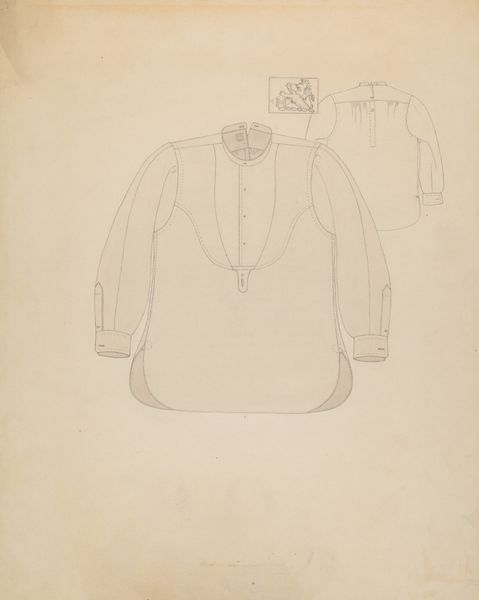
drawing, paper, pencil
#
drawing
#
aged paper
#
toned paper
#
light pencil work
#
pencil sketch
#
sketched
#
figuration
#
paper
#
personal sketchbook
#
historical fashion
#
pencil
#
sketchbook drawing
#
pencil work
#
fashion sketch
Dimensions: overall: 28.9 x 22.7 cm (11 3/8 x 8 15/16 in.)
Copyright: National Gallery of Art: CC0 1.0
Henry De Wolfe sketched these pantaloons, likely in the late 19th or early 20th century, using pencil and watercolor on paper. The garment, with its high waist and vertical stripes, speaks volumes about the era’s rigid social structures. Consider the recurring motif of clothing throughout history; from ancient Roman togas to medieval tunics, clothing symbolizes status, identity, and societal roles. Even the simple act of buttoning, prominently featured in the sketch, carries layers of meaning. Buttons, like clasps, imply closure but also the potential for release, embodying a tension between control and liberation. Throughout different times and places clothing has been much more than mere fabric: Think of the Puritan's somber attire, a stark contrast to the flamboyant garments of the Renaissance court. The symbolic evolution of attire is part of our collective memory and a testament to how visual language has shaped cultural narratives.
Comments
No comments
Be the first to comment and join the conversation on the ultimate creative platform.
